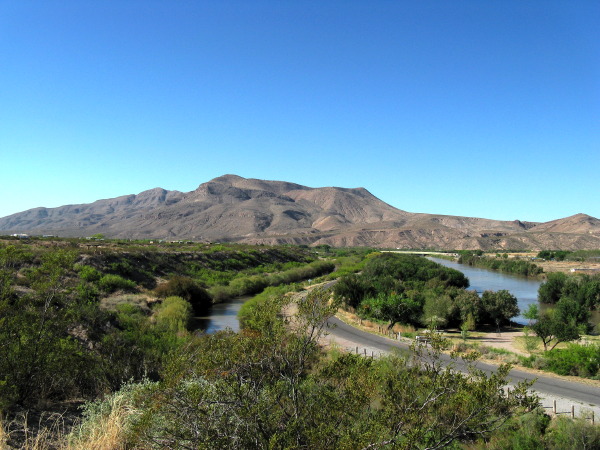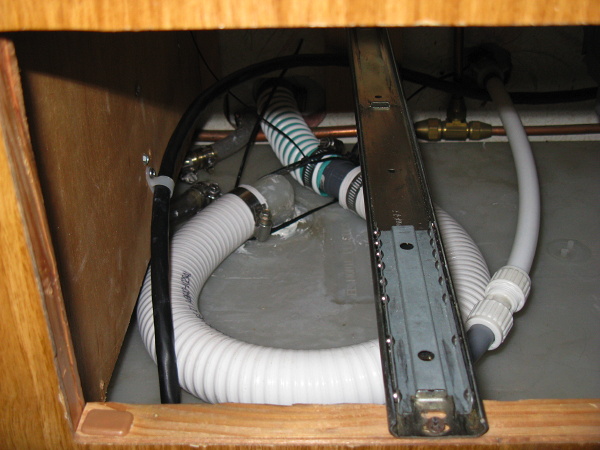Wednesday, January 21, 2009 - Leasburg Dam State Park, Radium Springs NM
< previous day | archives | next day >

Acequia and Rio Grande River, Leasburg Dam State Park, Radium Springs NM, January 21, 2008
Water inlet hose repair goes awry
Working at Home Depot turned out to be a good idea. It took several trips into the store to finally come up with a collection of parts that would work in the confined spot I had available. The repaired inlet should work but I'm not really satisfied with the kludgy make-do nature of the repair.

Water tank inlet, January 25, 2009
Night camp
Site 11 - Leasburg Dam State Park, Radium Springs NM
- Verizon cell phone service - good signal
- Verizon EVDO service - good signal
- Go to Leasburg Dam State Park website
- Locate Leasburg Dam State Park on my Night Camps map
- Check the weather here
Five Trillion Spiders
Spiders begin their hunting with a few handicaps. They're often smaller and weaker than their prey, and they have no wings to give chase in the air. Some species extend their legs by hydraulic pressure, using the same liquid that carries oxygen from their lungs, so they have a hard time running and breathing at the same time. Even their poison may be no match for their victim's: a crab spider's bite is to a honeybee's sting as "an air-gun compared with an elephant rifle," John Crompton wrote. Yet spiders kill at an astonishing pace. One Dutch researcher estimates that there are some five trillion spiders in the Netherlands alone, each of which consumes about a tenth of a gram of meat a day. Were their victims people instead of insects, they would need only three days to eat all sixteen and a half million Dutchmen.
From Spider Woman by Burkhard Bilger, The New Yorker magazine, March 5, 2007, page 69